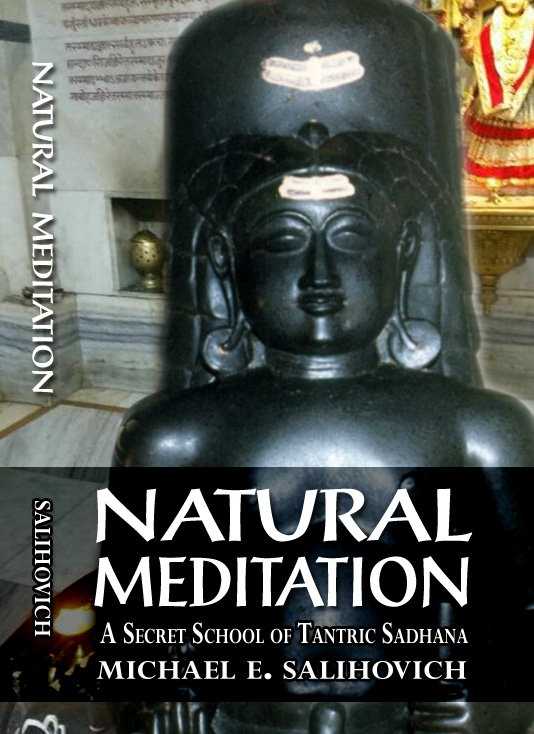
Natural Meditation: A Secret school of Tantra Sadhana
Michael E. Salihovich
Format: Softcover/172 pp.
ISBN: 978-1-914153-18-1
£14.99/US$22.00
Subjects: Tantra, Yoga, Meditation


Natural Meditation: A Secret school of Tantra Sadhana
Michael E. Salihovich
Format: Softcover/172 pp.
ISBN: 978-1-914153-18-1
£14.99/US$22.00
Subjects: Tantra, Yoga, Meditation
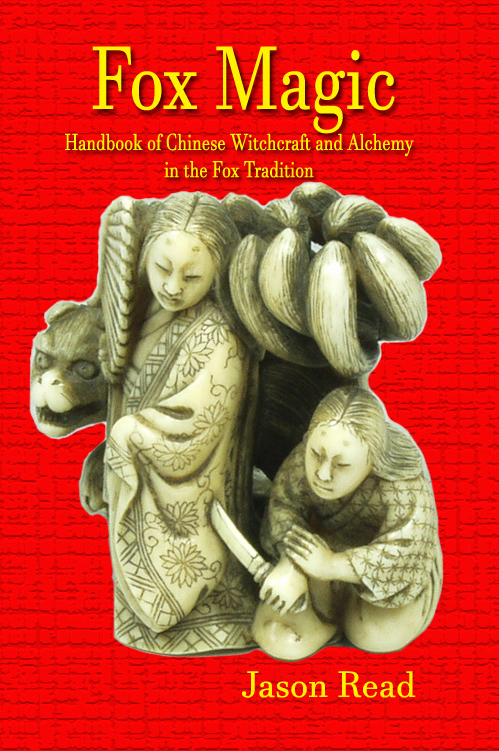
Fox Magic – Handbook of Chinese Witchcraft and Alchemy in the Fox Tradition
Jason Read
978-1-914153-07-5 (pbk) 168pp
Special “Altar” edition, jacketed case laminate, colour images
978-1-914153-08-2 (Jacketed cased laminate) 172pp
£30 UK Order
$40 USA Order
According to ancient legends, thousands of years ago a mysterious being known as the Nine Tail Fox taught her devotees the secrets of witchcraft and alchemy. This witch cult survives to this day and is practiced in many Chinese and Japanese communities in relative secrecy.
From her origins with the ancient Wu Shamans and the Tantric dakinis, the author explores this unique and often overlooked form of witchcraft.
Learn the history of the Fox Immortal and her influence on Asian politics and history. Investigate the Tantric origins of the Fox Goddess.
Learn the secret rituals from the Chinese grimoires that invoke the help and aid of the Fox Immortal as a personal magical tutor.
Learn the ways of glamour and fascination taught to devotees of the Fox Temple. Investigate the mysterious tantric rites of the Tachikawa Ryu.
Investigate the Mysteries of the white branch of death and the red branch of sexuality.
Learn some of the many spells used by the Fox cult of witches.
The Shakta Tantrika of the Uttarakaulas
John Power
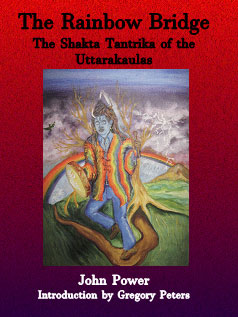
The Rainbow Bridge – The Shakta Tantrika of the Uttarakaulas
John Power
ISBN: 978-0-9542286-3-7
£15.00+p&p / $24.00+p&p
Click HERE for UK edition
Click HERE for USA & AUS
John was a student of Tantrik guru Dadaji Mahendranath [1911-91] in a correspondence that lasted from 1971 to 1991 and with occasional meetings. The last few years were difficult after Dadaji suffered strokes that affected his memory and ability to write with joined up lettering.
Dadaji was a Londoner by birth, whose maternal family included hereditary witches, and after meeting Aleister Crowley in his final years, when he was translating Chinese Taoist texts, he advised Dadaji to travel East if he wished to discover the pinnacle of mystical practices. At length, after interceding war activity, he did just that, via Australia to the far East, before settling in Gujarat, India. In so doing he did indeed bridge the range of Eastern and Western philosophies. It was in respect of this that he first borrowed the Norse image of the Rainbow Bridge when seeking to create a fusion of Eastern and Western practices.
The two main streams of activity that Dadaji was most keen to see made available to westerners came from the two main initiations he received in India: The Adi Nath lineage from Matsyendranath and the Uttarakaula Tantrik tradition of North India.
The former emerged as the Arcane Magical Order of the Knights of Shambala, AMOOKOS; the latter as the Fellowship of Uttara Circles of Kaulas, which he asked John to organise for him. Most of the contents of this book are the collected essays created as guidance for those taking initiation in the group, and others with interest.
Otherwise, John has worked as an Art teacher and therapist in schools, colleges and prisons, having achieved his Masters Degree in Jungian Psychology and Art Therapy from London University in 1982. Some of his paintings illustrate this volume.
Gregory Peters is a writer and researcher who has written about Tantra, non-duality, and the intersection of East-West spiritual practices. He is an initiate of Adinatha and Uttara Kaula lineages of tantrika, as well as Dzogchen and western esoteric orders. His latest book was the Magickal Union of East & West from Llewellyn Publications.
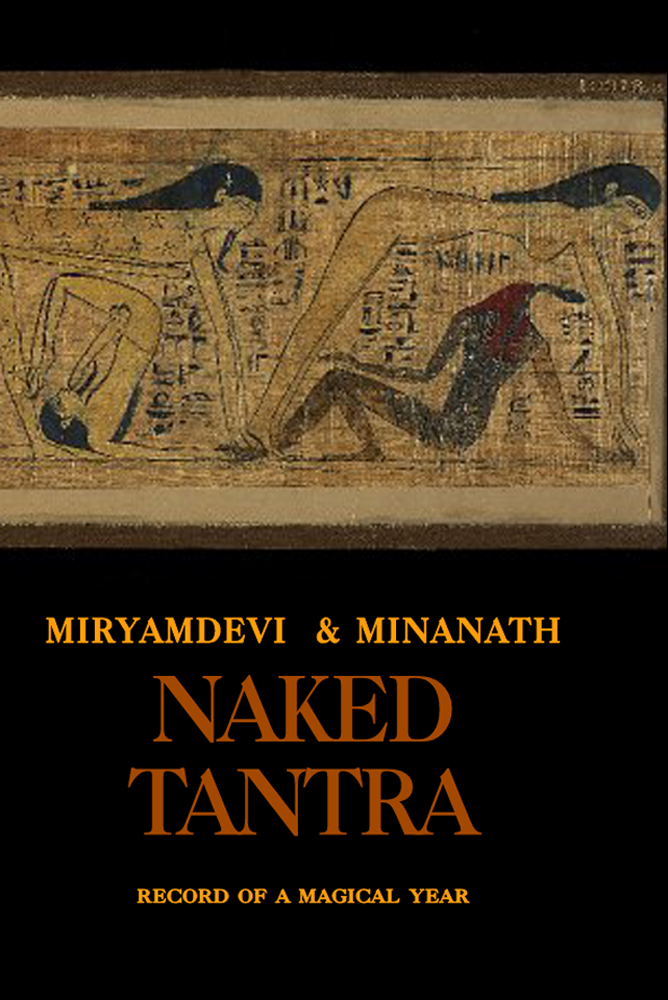
NakedTantra
Record of a Magical Year
By Miryamdevi & Minanath
978-1-906958-97-8
$24.00 / £15.00
Click Here for NakedTantra / USA
Click Here for Kindle edition / USA
Click Here for NakedTantra / UK
Click Here for Kindle edition / UK
There are many books on how to do magick, but not so many with stories about actually doing it and what happens. NakedTantra lays bare the inner states of the two brave souls involved in this extended magical work.
An experiment, two people, two countries, one mind, experimenting in tantra meta-magick, cosmic astral travel to the land of no boundaries, looking for the doors of perception.
Of necessity, the contents of this grimoire might be considered erotic. And, with that thought in mind, it might also be that the reader is occasionally aroused by our story as it progresses. Some might find this an unwanted intrusion, into what is otherwise an exploration of a magical world. Others we surmise will take this in good part, accepting that, a spoonful of sugar helps the medicine go down. To those who do not share these sensibilities, and are unmoved by what you are about to read, we offer our sincerest apologies.
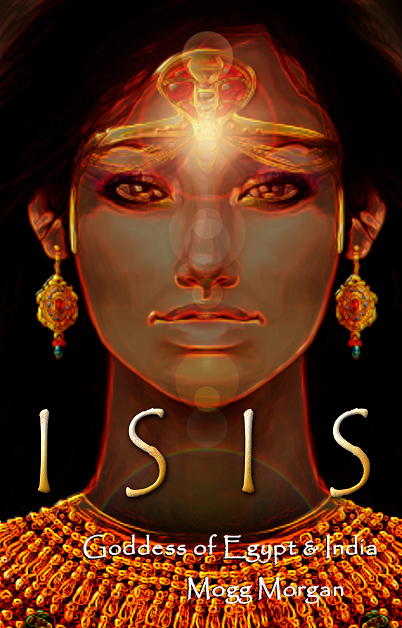
Isis, Goddess of Egypt & India
Mogg Morgan
ISBN: 978-1-906958-71-8,
£17.00/$26.00
– A Temple of Isis in India –
On India’s, south-western or Malabar coast is situated an ancient Hindu temple which is these days devoted to the famous Hindu god Shiva and his consort the fearsome goddess Kali. This is Kurumbha-Bhagavathy Devi outside of the modern city of Cochin or Kochi in Kerala state.
Travel back in time and the temple housed other gods. Once it was the home of the Buddhist/Jaina goddess Pattini whose mortal husband was tried and killed in a series of brutal events still commemorated in the temple’s ritual year. Before this and the story gets even stranger, as there are said to be remains of a secret, underground shrine, the home to a mystery cult dedicated to the Egyptian goddess Isis.
At the time of Christ, there was indeed a Greco-Roman merchant colony based in this part of India. Greek, Roman & Near Eastern merchants travelled to India after a regular, if epic, sea journey of two thousand miles across the Arabian Ocean, making their first landfall at a port known in the ancient world as Musiris. Clues to the religious practices of these ancient traders is evident not just in the surviving architecture but in very many, sometimes unique features of the later cults, continuing into the modern-day.
Some of the best examples come from the rites of Pattini as once practised at Kurumba-Bhagavathy Devi. Experts have often identified the story of her husband’s death and resurrection, as something of the Near Eastern cult of Attis. But a more recent and credible theory is that the temple once hosted the mysteries of the cult of Isis, whose husband Osiris was also cruelly cut down but then resurrected by her magical prowess.
So without more ado let me tell the whole story from its beginnings on the banks of the Nile. The story of Isis and Osiris is the basis of Egypt’s most popular religion. In what follows I trace the origins of this to Egypt’s pyramid age in the middle of the second millennia BCE. Arguably it is even older. A great deal of this books is devoted to describing what is known about the cult of Isis and Osiris from Egyptian records. This, I shall argue, is the basis for what comes later in the timeline, when the world was dominated by the Greek and Roman Empires. Isis and Osiris became the focus of global religion and the basis of the most popular of all classical mystery cults. This is precisely the time at which a small, Near Eastern shrine was built in South-West India to service the needs of the merchant trading post. Mysteries of Isis were popular among all social classes in the ancient world, especially mariners.
In India, we have a building which could itself be thought of as storing the memory of influences from each new wave of belief. We can follow the progress and transformation of its changing occupants, as each absorbs some of the archaeological memory. Finally, we arrive at its current incarnation and the celebration of the Bharani festival, which marks the beginning of the hot summer before the coming of the Monsoon rains. Many non-orthodox rites will enliven the tale. The mysterious society of Atikals returns to their lost temple every year to conduct secret rites culminating in twelve hours of ‘Misrule’, during which hundreds of thousands of devotees appear from all over Kerala.
There are other devotees who carry sticks, which they swirl in their dancing; others brandish the sickle sword. Most of these pilgrims are non-Brahmin ritual specialists such as the Veliccappadu. Their name means “a channel who sheds light” for they are spirit mediums, men and women, followers of Kali who utter oracles when in trance. They dress in red and wear heavy anklets and bells.
In the final part of my story, I present a complete and ‘lost’ version of the most famous drama of all time, the celebrated myth of passion play of Isis and murdered husband Osiris, clearly recognizable even in its current idiom based as it is in South Asian ritual drama. The drama is reproduced in its entirety as it reveals many previously unknown aspects of one of the world’s oldest myths.
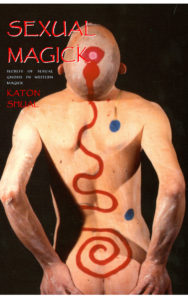
Sexual Magick
Secrets of Sexual Gnosis in Western Magick
Katon Shual
Format: Softcover
ISBN: 978-1-906958-48-0
£15.00 / US $24.00 186pp
Subjects: Sexual Magick/Aleister Crowley/Thelema/Tantra
Sexual Magick / UK / £15.00
Click here for Kindle USA Edition
Sexuality is one of the keys to magick. In this book, first published in 1988, Katon Shual presents some of the secrets of sexual gnosis within western magick – a system that is often misunderstood. The book begins with a look at the revival of sexual magick in the early part of the 20th century, especially within the ranks of the Hermetic Order of the Golden Dawn and some of the post Golden Dawn magical groups such as Aleister Crowley’s Thelemic cult. The book goes on the look at the modern fusion of western Hermetic and eastern Tantrik sexual gnosticism. On the way it discusses in a progressive manner gay, straight and solitary sexual magick. The book goes on to introduce the ancient deity Seth as an archetype of the sexual magician. The book includes an unpublished grimoire of sexual magick, as well as several other unusual sources, including an authoritative exploration of the chakra system, a magical approach to Kundalini and an introduction to the relationship between the sacred sexuality and the external landscape.
‘Makes the subject of sexual magick accessible and lucid and above all relevant to contemporary magical practice’
– Phil Hine reviewing in Talking Stick magazine
body magick cover art and insides by Michael R Goss
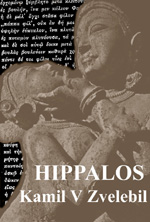
Hippalos
Kamil Zvelebil
Available as an ebook
Click here for Kindle UK edition
Click here for Kindle USA edition
For those interested in my study “Isis in India” you might enjoy this electronic version of Zvelebil’s factional account of the life of Hippalos. The late Kamil Zvelebil was a great scholar of South India, although not such a good novelist . . . even so it has much value as an account of an interesting and little known period of Indian History. The print edition currently unavailable and there is a small charge for the ebook – although you can read a sample chapter first…
Softcover/272pp/3 maps/ISBN: 1869928-415/Fiction
OUT OF PRINT
Greek and Indian sources tell of an Alexandrian Greek navigator called Hippalos. He discovered a direct route across the ocean from the Red sea, to legendary Musiris in South India. 2000 miles of open ocean in 30 days and nights. India: when the Kama Sutra was first written down. India where Buddhists and Hindus hate each other with a vengeance and where mighty dynasties are embroiled in bloody war. Against this powerful backdrop the heart of Hippalos is tested to its limit as friends fight for survival and a passionate love affair grows. Hippalos’s journey, based on fact, offers us a way through the vast ocean of Indian story. You will be entertained and then initiated into the secrets of ancient India as you have never before seen it.
About the author:
Kamil V. Zvelebil, born in 1927, is professor-emeritus of Indian studies at the universities of Chicago, Heidelberg, Utrecht and Prague and also an ordained Zen Buddhist monk.
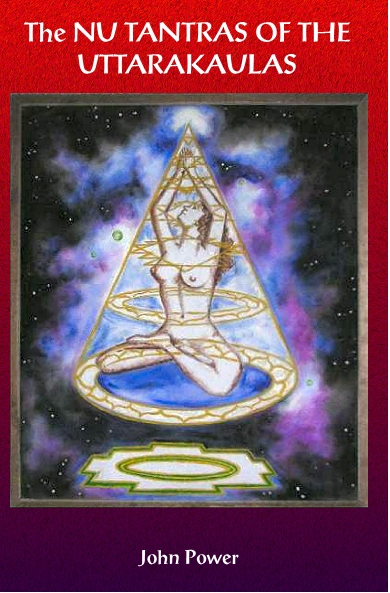
Nu Tantras of the UttaraKaulas
John Power
Publisher: Phoenix Publications Chelmsford 2011
ISBN: 978-0-9542286-6-8
£15.00+p&p / US$24+p&p
Click HERE for UK edition
Click HERE for USA & AUS
“The book by John Power is one of the first attempts I have seen to write a critical analysis of some of Mahendranath’s writings. John was entrusted with the Uttarakaula tantric aspect of our world and he has obviously nurtured and worked with his specialty for as he says 21 years (and more now.) At the end of his analytical work he includes original, very creative and fascinating rituals that are the summation of his experience. It is quirky and personal and that adds greatly to its value. I have often gotten swamped by Mahendranath’s large output of written words. To see a few of his major tantras re-worded, discussed, analysed and emotionally digested is so helpful. I recommend that those who are interested in the works of Mahendranath give this work more than a quick cursory glance.”
– Lalita Devi, Canadian Initiate and Tantrik Yogini.
“Power begins with an intro that traces his own relationship with Tantra, before clearly laying out the perspectives he is viewing the tradition from and giving a biographical note about Shri Dadaji Gurudev Mahendranath. He then proceeds to summarise Dadaji’s initiation and writing, then includes some of his own original rituals and images. This book is beautiful. So what validity does my opinion have especially in the light of my own rather self damning opening statement (to compound this outrage I neither understand Sanskrit nor am an initiated Tantrika)? However I have been a practicing magician for a long time, have lived in both the occidental and oriental environs, and have the insight into art, magick and humanity that comes from age and experience. I believe John Power has written a book that is of great value. It is about love and freedom; fun, liberation and compassion; and ways to work for and with this in a creative and progressive way. ‘The Nu Tantras of the Uttarakaulas’ is about magick from the heart and the inner self; the greatest and most transformative magick there is.” (Charlotte Rodgers, whose The Bloody Sacrifice is published by Mandrake)
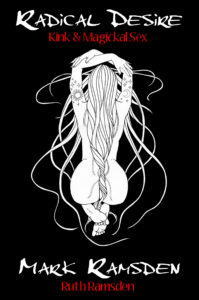
Radical Desire
Kink & Magickal Sex
Mark Ramsden & Ruth Ramsden
Format: Softcover/140pp
ISBN: 978-1-906958-19-0
£15.00 / US$24.00
Subjects: Erotica/Fetish/Tantra/Erotic Art/Non-Fiction
USA & AUS editions
–
RADICAL DESIRE
Re-written with much new material
Completely new illustrations & 3 bonus short stories
“The wit and wisdom of Mark Ramsden’s illuminating text delivers a gripping journey through a rich seam of sexual expression. Read this book, enjoy this book, for it deserves your utmost attention. Over 40? Fat? The style gurus say you’re not sexy, not horny, this book says ‘Bollocks!’ An essential reference work… And bloody good fun too.” – – John Carter
Radical Desire review on Amazon
“This slim (140 pages) book is part brutally honest, unpretentious and often hilarious autobiography, (page 28 is a full page photograph of Mr Ramsden’s pierced penis with the caption “The author making a dick of himself with his eighth Prince Albert upgrade”) part encyclopaedia of fetish (including Piercing, Corsets, Rubber, Switching and Scarification) part tour guide for fetish-loving tourists (“Some say the dungeon play (at Club Rub) is not as extreme as at certain clubs but then I don’t go to a club to see perverts fisting each other. I can get that at home.”) part fine visual art (all illustrations by Ruth Ramsden) and part fiction (2 kinky short stories, here’s an excerpt from “Madam Petra”: Sometime, somewhere, we are always together. Exchanging fragments of dreams and whispered prayers. In the long, slow, sweet dance of desire. Warmed by a pussycat smile.) and entirely satisfying.
”Radical Desire: Kink & Magickal Sex, is not so much a book as it is an experience; one that kinksters, new, experienced, or jaded, should not miss.”
– Madeleine
—
The Author
en.wikipedia.org/wiki/Mark_Ramsden
ALSO BY THE SAME AUTHORS:
The DARK TANTRA TAROT is a synthesis of sex, fetishism and spirituality created by Mark & Ruth Ramsden.
www.darktantratarot.moonfruit.com
Read a review of the DARK TANTRA TAROT on the AECLECTIC TAROT WEBSITE
www.aeclectic.net/tarot/cards/dark-tantra/review.shtml”
BLUE MURDER at THE PINK PARROT
A flamboyant, surreal, stylish, erotic, noir thriller novel by Ruth Ramsden.
Read a sample chapter, read the reviews and get a copy of BLUE MURDER at THE PINK PARROT on www.amazon.co.uk website
www.amazon.co.uk/Blue-Murder-at-Pink-Parrot/dp/1908122242
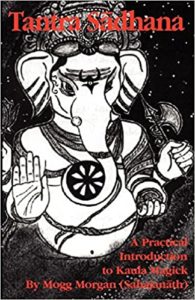
Tantra Sadhana
A practical introduction to Kaula Magick
Mogg Morgan (Sahajanath)
(AMOOKOS)
Format: Softcover
ISBN: 978-1869928-421
£15.00 / US $24.00 180pp
Subjects: Tantra/Amookos
Click Here for Tantra Sadhana /USA
Click Here for Tantra Sadhana / UK
Click Here for the Kindle Edition / USA
Click Here for the Kindle Edition / UK
A ‘Sâdhana’ is an instrument that leads to a particular goal. In Tantra, it is a technical term denoting worship or spiritual practice.
Tantra Sâdhana is a collection of related instructional papers designed to aid the aspirant through a foundation practice.
The work was originally conceived as leading to a practice over the course of one lunar month. In addition, the author had added several useful appendices – including the previously unpublished Tantrik Knuckle Bone Oracle.
The reader might find this a good general primer combined with some more unusual, perhaps advanced material.
Contents:
Introduction / / What is Tantra? / Sâdhana/practice / Mantra / Mandala or Yantra / MudrA / NyAsa / DhyAna / PUja / DIkshA / Magick and Liberation / Svecchacara / Tantrik traditions and sects / Recommended Reading / The opening rite / Yoga of the voice / Quarter Guardians / Visualisation / The Astral Temple / The Kamarupa Temple Meditation / The Kalas / The Ganesha Practice (Sadhana) / Ganesha rupa / The ‘Demon’ Doctrine and the roots of Tantra / Invocation of Kundalini / IV The Serpent Power /The Kaulajnana -Nirnaya of the School of Matsyendranath / Yoga Sutras of Patanjali / Grammar of Tantra / The VAma-keshvari-matam / Oracles / Tantrik Knuckle Bone Oracles / Pronounciation / When Your Guru Goes Gaga / Hindu Lunar Calendar
Review from White Dragon
“I first became interested in Tantra years ago when I read AGHORA, At the Left Hand of God by Robert E. Svoboda. The ideas of breaking out of social conditioning, becoming yourself, all appealed to me. Since then though my interest waned due to the New Age inundation of, ‘tantra for lovers’ type waffle.
Then comes Tantra Sadhana for me to review and I once again find myself inspired. This e-book takes the form of an introduction to the subject and then gives the reader some basic ritual to work through. First published as a fact-sheet for AMOOKOS, Arcane and Magickal Order of the Knights of Shamballa, so you know the information in chapter one is solid enough.
The inclusion of the Gnostic Pentagram Ritual was not to my taste, It’s a personal thing, but I would rather the author had used the version from the PGM, from which the GPR is a more rubbish version. I know why it’s there, but it didn’t work for me.
What I did find very useful was the extensive appendix, for me, this is the best part of the book, and with a little imagination can be used to form your own Tantric rites. I was very pleased to see the Ganapati Upanishad text included, I was at a private ritual years ago where Phil Hine did this and I found it very moving.
Anyone interested in Tantra beyond the New Age tripe will enjoy this book and I would recommend it without reservation. I would also say it’s worth reading for people interested in Chaos Magick, because reading it, it becomes obvious how Tantric ideas have shaped the Chaos Current that we have today. ”
Greek and Indian sources tell of Greek and Indian sources tell of an Alexandrian Greek navigator called Hippalos. He discovered a direct route across the ocean from the Red sea, to legendary Musiris in South India. 2000 miles of open ocean in 30 days and nights. India: when the Kama Sutra was first written down. India where Buddhists and Hindus hate each other with a vengeance and where mighty dynasties are embroiled in bloody war. Against this powerful backdrop the heart of Hippalos is tested to its limit as friends fight for survival and a passionate love affair grows. Hippalos’s journey, based on fact, offers us a way through the vast ocean of Indian story. You will be entertained and then initiated into the secrets of ancient India as you have never before seen it.
Softcover Edition / 272pp / 3 maps / Price: £9.99 / OUT OF PRINT

Click HERE for UK edition £20.00+p&p
Click HERE for USA/AUS editions $30.00+p&p
Siddha Quest for Immortality
Kamil Vaclav Zvelebil
Format: Softcover
ISBN: 1869928431
£20.00/US$30.00
Subjects: Ayurveda/Tantra.
–
In South India there is a society where priests and lay people claim supernatural powers. Where a sophisticated medical system underlies a quest for physical longevity and psychic immortality. And where arcane and sexual rituals take place that are far removed from the Brahmanic tradition.
That society is the Tamil Siddhas. In the Siddha Quest for Immortality world Tamil expert K Zvelebil offers a vivid picture of these people: their religious beliefs, their magical rites, their alchemical practices, their complex system of medicine, and their inspired tradition of poetry.
In the Poets of the Powers, Zvelebil introduced English speakers, for the first time, to the astonishing power of Siddha writing. The Siddha Quest for Immortality includes many newly-translated examples of poetry that is deeply religious but not without humour. But physical longevity was also central to Siddha belief, and fascinating chapters on Siddha medicine describe routines by which one can maintain health, and tell how drugs are created from such varied ingredients as cowdung, human urine, honey, oil, and milk.
Part of a Tantrik-Siddha Ritual
‘In the centre of a ritual circle…sits a chosen woman, completely naked, who symbolizes Devi, i.e., Sakti…caste or community is of absolutely no importance in the selection of this woman…This Sakti, thoroughly washed and perfumed all over her body with various perfumes sits on a sort of pedestal with widely spread legs so that her yoni (vulva) is well visible. The leading Siddha will kiss the yoni, and bless various non-vegetarian foodstuffs through the contact with the yoni by touching and rubbing with them the vulva of the Sakti. Then these offerings are distributed among the participants and consumed…’
The Siddha Quest for Immortality
‘While the non-Siddha proclaims that, in order to escape the wheel of birth-and-death the only course open to man is the attainment of spiritual freedom crowned by physical, bodily death, the Siddha maintains that one must overcome physical death in this life itself and ‘live forever’…the great work that lies before man is to purify one’s body and sanctify one’s life, and integrate the two…into one eternal monad, so that body and life become identical.’
The Poets of the Powers
‘Siddha writings are at once most thrilling, even sensational but at the same time the darkest and only very little-known texts in Tamil. They represent a complex and provocative puzzle: flashes of stunning intuition, knowledge, even deep wisdom as well as results of effective practice seem to be mixed with incredible naivete, hardly acceptable superstitions, and dark and amazing claims.’
Plagiarists and impostors?
‘Even Indians themselves, when raised on the niceties of early twentieth century English or Anglo-Indian culture, described the Siddhas as “plagiarists and impostors”, “eaters of opium and dwellers in the land of dreams, their conceit knowing no bounds.’
Siddha Iconoclasm
‘You begging bullocks!
In ochre robes,
with matted hair,
with water-vessels,
rosary-beads and walking sticks,
you have forsaken your women
and roam about the country wide and large
begging for a grain of boiled rice!
Idiots!’
Further extracts below:
Extract
Foreword
The Tamil Siddhas cannot be regarded as one homogenous ‘movement’ or ‘school of thought’ manifesting a unified, well-defined, uniform ideology. A great number of elements have entered into their thinking, some of them pan-Indian, some of them apparently specifically South Indian or Tamil. On the other hand, their overall ideology has, of course, several basic doctrinal tenets in common. As we shall see, some of these tenets are in amazing correspondence with the most recent developments in modern physics of post-relativity and quantum theory era. The schema of dense and subtle matter is one of those tenets: according to ultimate Siddha thought, subtle matter constitutes the inner body of man; matter is nothing but crystallized energy, and a manifestation of infinite and universal mind (‘subtle matter’ reappears in the theories of physicists of our day). An accomplished Siddha is someone who has learned to harmonize his awareness with this subtle (sub-atomic?) matter of which he is composed. The Siddha alchemist can live in the mode of constant appearance and disappearance, manifestation and dissolution, of subtle matter and energy; and all matter forms a continuum. Neither matter nor consciousness are ultimate, for both have their source in something still ‘beyond’, in Civam which can not really become object of knowledge. Hence the Siddha poet speaks often of ‘silence’:
Silence, unmoved and rising,
Silence, unmoved and sheltering,
Silence, unmoved and permanent,
Silence, unmoved and brilliant,
Silence, broad and immense like the Ganga,
Silence, unmoved and increasing,
Silence, white and shining like the Moon,
Silence, the Essence of Siva.
The only possible predication of the ‘something’in which both matter and consciousness have their source is Void, Emptiness. Hence, again, one of the key-terms appearing in Siddha poetry: vettaveli, cuniyam ‘utter emptiness, void’, veliyirveli (liter.) ‘void in emptiness’ i.e. supreme, absolute Emptiness; or, simply, veli (liter ‘open space; space; openness’) ’emptiness’:
Gods made out of wood
Gods made out of stone
Gods made out of palmyra fronds
Gods made out of bone
Gods made out of rags
Gods made out of dung
Gods made out of saffron bags
There are no other gods
but
VOID
(Civavakkiyam 503/510)
must be stressed, however, that by this emptiness is not meant a substantive emptiness like ‘an empty box’. It is emptiness which is a plenum (more about all this will be said in subsequent chapters). And man can come into contact with this Void. How, that is precisely what the Siddhas tell us.
These, then, are, in very simplified words, some of the ultimate and basic doctrinal points common to all those thinkers, poets, alchemists and physicians designated as cittar (Siddhar, Siddhas) in Tamil India. Now, to speak of less lofty matters, the reader must be made aware that, nowadays, when it comes to Siddha medicine and medical practice, there even exist, in Madras, a government Siddha dispensary, and a government Siddha medical college. Also, let us return to what divides the Siddhas from one another; let us mention at least one of their important ‘inhomogeneities’ – the Siddha attitude to sex.
The Siddha attitude to sex often manifests features which are in mutual contrast, and thus represents a good illustration of the heterogeneous character of the Siddha ‘movement’. On the one hand there are Siddha poets who express utter disgust and revulsion towards women and any sexual activity (e. g. Pattinattar who in Potu 14 speaks of men who ‘for the sake of a cunt / perish day and night’, and in 31 mentions ‘women / who smell of their / sensuality’, whose ‘limbs stink of their discharge’). Pattinattar is not the only one, although he probably represents the most vigorous manifestation of the ascetic, stern, misogynist trend of Siddha thought. On the other hand, in drastic contrast – so at least it seems – there is an entire group of Siddha alchemist-medicine men who are obviously raised in the Tantrik tradition, and who in fact take part in rituals based on the Tantrik cakrapuja. This stream of Siddha thought and practice will be dealt with in some detail in chapter 12 of this book, but here I wish to indicate very briefly the most salient features of such Tantrik-Siddha ritual.
In the centre of a ritual circle (cakkiram) sits a chosen woman, completely naked, who symbolizes Devi, i. e. Sakti, the Primeval Energy of the Cosmos, the Goddess, and it is characteristic of the Siddha views that caste or community is of absolutely no importance either in the selection of this woman (she can be a virgin as well as a prostitute, a young Brahmin girl as well as a ripe low- caste lady), or in the gathering of the participants. This Sakti, thoroughly washed and perfumed all over her body with various perfumes (according to an exact prescription; for details cf. chapter 12), sits on a sort of pedestal with widely spread legs so that her yoni (vulva) is well visible. The leading Siddha will kiss the yoni, and bless various non-vegetarian foodstuffs through the contact with the yoni by touching and rubbing with them the vulva of the Sakti. Then these offerings are distributed among the participants and consumed. The participating men, who for five days preceding the puja had been eating meat, drinking alcoholic beverages and using aphrodisiacs according to Siddha pharmacopoeia, will naturally be in a state of high sexual arousal which must however be strictly controlled, until ritual cohabitation follows with their chosen female partners which – and this is a basic and most important requirement – must never end in ejaculation of the sperm. The Siddha tenet underlying all this holds that the enormous force which is released by controlled sexual tension must be translated from the gross physical level to the ‘subtle’ body and ultimately to the psychic level whereby one attains various siddhis or supranormal powers and ‘immortality’.
This book consists of some sixteen sections. The introductory chapter describes in broad outlines general features of Siddha medicine (since this is what the book is mostly concerned with), and in the following chapter are spelled out ideological tenets of the specific Siddha quest of immortality. Next chapter deals with basic principles and beliefs of Siddha physicians. The following section gives first a rather detailed account of Siddha materia medica and its use, and moves on to the cure prescribed for a number of various diseases. Three very brief sections follow: on Siddha yoga, daily regime, and alchemy. The following chapter is concerned with the specific Siddha techniques for the attainment of longevity and ‘immortality’. Then follows a description of some doctrinal aspects of Siddhism as reflected in contemporary medical practice, and of a visit in a Siddha dispensary in Madras. Tantrik Siddha school and Siddha attitudes to sex are dealt with next. After the conclusions, a short anthology of selected Siddha poetic texts is offered to the reader. Index of terms in precise transliteration and select bibliography close the book.
Cunnilingus according to Tantrik Siddhas
[from a late medieval text in Tamil entitled Treatise on the Arrow of Lust
First Stage
Like a cow which licks tenderly its calf
spread out your tongue broad
and lick her yoni
lapping up the juices oozing out
like a thirsty dog which laps cool water
(continues)
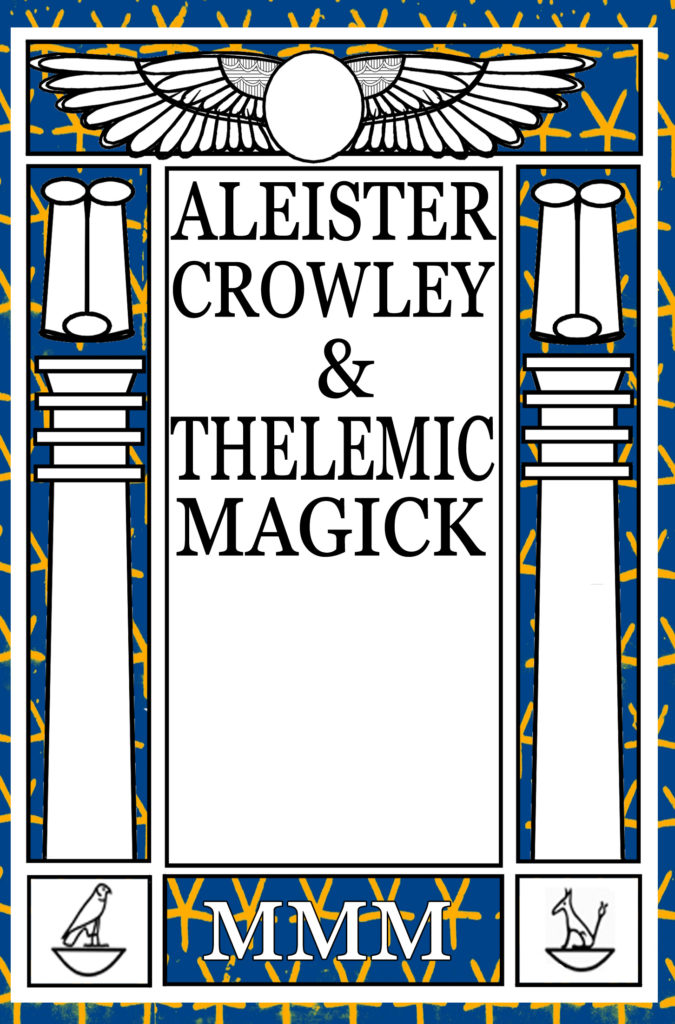
Hell of a Guru
Do what thou wilt shall be the whole of the law
Aleister Crowley may have died in 1947, but his influence is still very much felt by the magician of the new aeon. The CD soundtrack The Beast Speaks sold 8000 copies since its release in 1993, and the paperback edition of Crowley’s Confessions was number two in Virgin Megastores top ten books. The modern magician is no slavish follower or member of some mind bending cult. Crowley’s watch word was Thelema (The Crowleian pronunciation is Theh-LEE-mah, the accent being on the vowel of the second syllable, Greek speakers say the accent should be on the vowel of the first syllable for it to be pronounced right….ThEH-lee-mah) – which means [free] Will. Those who choose to follow this magical path aim to de-condition themselves, to develop independence of spirit and ultimately to become their very own self. One of the many attractions of Crowley’s type of magick, was this advice to follow one’s own way and create your own life path. You don’t need a priest or a judge to tell you how to act – work it out for yourself.
As part of the process of developing self-knowledge, Crowley advocated the practice of magick. This he defined as ‘the science and art of causing change in conformity with will.’
Thelemic magick can be either a system or an approach to the magick of any tradition, e.g. Hermetic, Ceremonial, even Witchcraft. In Thelema, as in all other styles of magick, there are at least two different types of magical entity – the ‘Masonic’ and the ‘Rosicrucian’. The Masonic tends to be organized into definite hierarchical orders; whereas the Rosicrucian is more freeform, often a mere network of peers. The authors of what follows reflect many of these different styles of Thelemic magick and reading what they say is perhaps the best way to grasp what Thelemic magick is all about.
As part of the process of developing self knowledge, Crowley advocated the practice of Magick. This he defined as ‘the science and art of causing change in conformity with will.’ The history of magick is the history of human beings. Many of the things that are now labelled ‘culture’ began as experiments in ritual and magick viz. drama, music, art, dance, philosophy and poetry etc., etc. Magick has played a role in many key moments of our history, for example during the fourteenth century, it was the philosophy of the Renaissance. In our own time, many modern art movements have been driven by magical ideas, for instance, the first abstract painting was made by the Theosophist Kandinsky. Magick is a valuable and reputable activity to undertake.
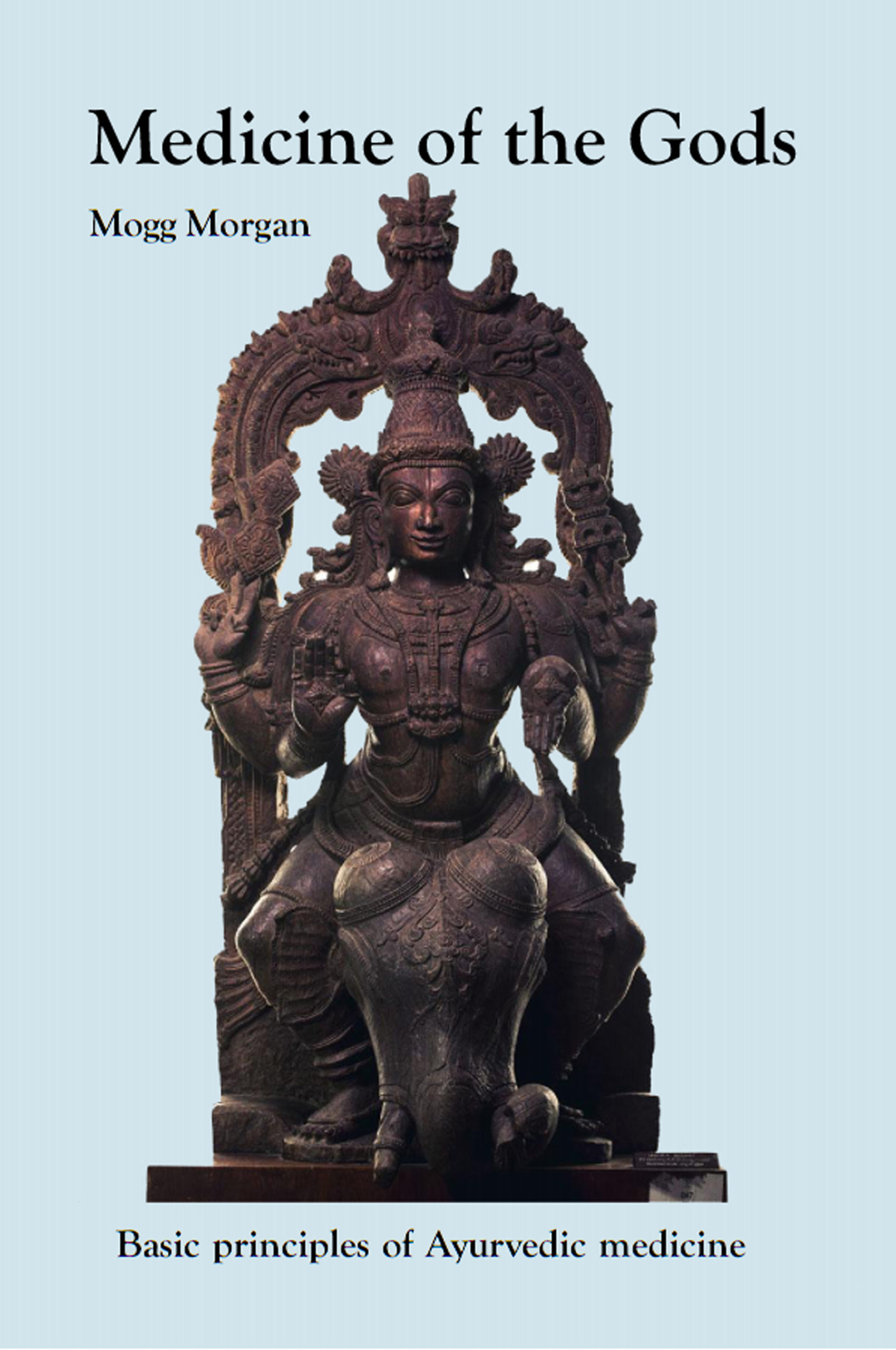 Medicine of the Gods
Medicine of the Gods
£15.00/US$22.00
Format: Softcover/ ISBN: 1869928377 148pp
Subjects: Ayurveda/Indology/Tantra.
Click HERE for UK edition
Click HERE for USA&AUS editions
Click HERE for Kindle edition
–
Ayurveda is an Asian medical system which has its beginnings in the sixth century BCE and thrives even to the present day. There was once a celebrated doctor called Caraka who lived in the second century of our era. He was one of the greatest physicians that have ever lived. He recorded the fact that the gods themselves were perplexed by the continued existence of the disease, which was a hindrance to humanity’s progress to enlightenment. These same gods, he says, therefore prepared the way for Ayurveda, which literally means the ‘science of longevity’ to be taught to the human race. Thus the title of this book is Medicine of the Gods.
Praise for first edition:
‘The author’s main purpose, introducing ancient Indian medical theory in a relatively trustworthy manner to the interested general reader in easy language, while at the same time being intellectually challenging, is served well by this book.’
– Rahul Peter Das in Traditional South Asian Medicine Vol 6 2001
‘This book contains virtually everything you could want to know about the Hindu system of Ayurvedic medicine, which began on or about the sixth century BCE and is still thriving today. The history, correspondences or “humours’, and other intriguing aspects of this intricate system are described in easy-to-understand language for those unfamiliar with Ayurveda. There is also a catalogue of ailments and how Ayurveda views each of them, and illness in general. I found this fascinating reading, both as a western herbal practitioner, and as a reader fascinated by how other cultures’
– Reviewed by Cerridwen Connelly in The Pentacle
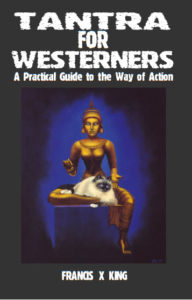 Tantra for Westerners
Tantra for Westerners
A Practical Guide to The Way of Action
Francis X. King
Format: Softcover
ISBN: 978-1-869928-60-5
£15.00 / US$24.00
Subjects: Tantra/Tantrism.
Click HERE for USA & AUS
Click HERE for UK
Tantra has been defined as “a mystical philosophy” and as “an unorthodox religious tendency”. Both definitions are incomplete.
While Tantra has mystical, philosophical and religious aspects it is, above all, a technique of action – a system of physical, mental and spiritual discipline incorporating meditation, yoga, and sacramental worship in the widest sense of the phrase. This system has one purpose: the transformation of the individual – his or her rebirth to a new existence.
There is no “tantric faith” to be accepted or rejected on the bases of thought and emotion. tantrics make the same claim as Western magicians: “if you follow a certain course of action you will be led back to the roots of your own identity and will learn the truth about yourself and the universe you inhabit.”
Tantra For Westerners is a complete theoretical and practical guide to the Way of Action, covering the concepts of pleasure and pain, power and passivity, esoteric physiology, Tantra and Qabalism, right-hand and left-hand Tantra, tantric ritual for westerners and the arousal of Kundalini – the serpent power.
Francis X King (1934-1994) was a well known authority on magick, mysticism and religion. His books includes Ritual Magic in England and The Magical World of Aleister Crowley.
Judith Page’s cover painting, title ‘Tristan’ 20″ x 24″ oil on canvas. It shows the Goddess Tsun’kie k’sai, a Burmese deity. The cat is a Burmese, sacred cat of Burma.
judith-page.com